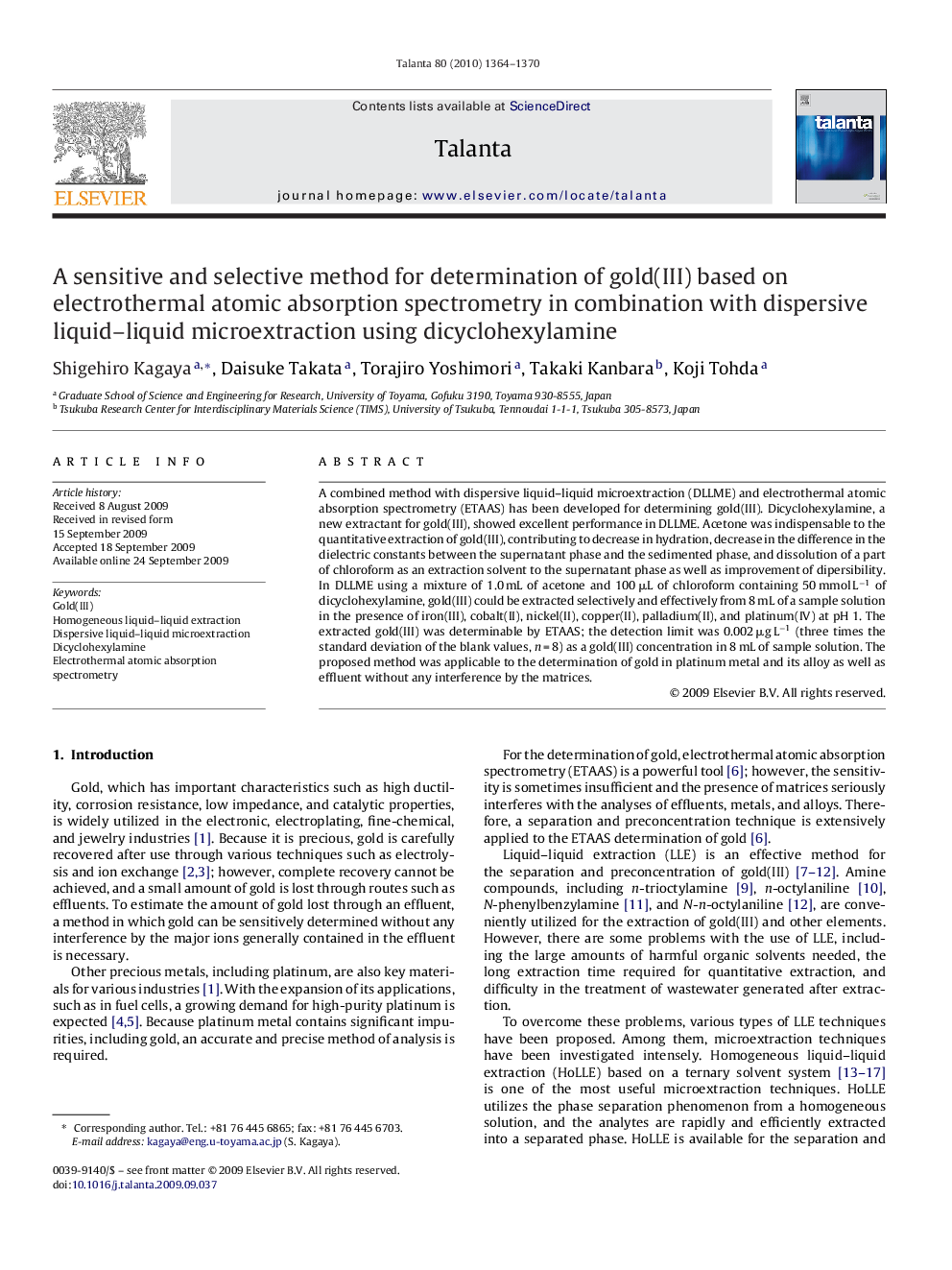| Article ID | Journal | Published Year | Pages | File Type |
|---|---|---|---|---|
| 1243492 | Talanta | 2010 | 7 Pages |
A combined method with dispersive liquid–liquid microextraction (DLLME) and electrothermal atomic absorption spectrometry (ETAAS) has been developed for determining gold(III). Dicyclohexylamine, a new extractant for gold(III), showed excellent performance in DLLME. Acetone was indispensable to the quantitative extraction of gold(III), contributing to decrease in hydration, decrease in the difference in the dielectric constants between the supernatant phase and the sedimented phase, and dissolution of a part of chloroform as an extraction solvent to the supernatant phase as well as improvement of dipersibility. In DLLME using a mixture of 1.0 mL of acetone and 100 μL of chloroform containing 50 mmol L−1 of dicyclohexylamine, gold(III) could be extracted selectively and effectively from 8 mL of a sample solution in the presence of iron(III), cobalt(II), nickel(II), copper(II), palladium(II), and platinum(IV) at pH 1. The extracted gold(III) was determinable by ETAAS; the detection limit was 0.002 μg L−1 (three times the standard deviation of the blank values, n = 8) as a gold(III) concentration in 8 mL of sample solution. The proposed method was applicable to the determination of gold in platinum metal and its alloy as well as effluent without any interference by the matrices.
